Do you have one or more of the following symptoms?
- Anxiety
- Tiredness
- Fatigue
- Trouble sleeping
- Cold intolerance
These are all common symptoms if you are feeling stressed or due to the winter blues caused by the long cold winter in Sweden. But it may also be something more serious, and far more common than one might think.
January is “Thyroid Awareness month” which calls attention to the various health problems connected to the thyroid. In this article we will discuss the thyroid, and the most common thyroid disorders.
Thyroid functions
Thyroid function is crucial to the metabolism of almost all tissues and is critical for the development of the central nervous system in the fetus and children (1). The treatment methods for thyroid disorders are harsh and may be ineffective for some patients (2).
Thyroid hormones are essential for:
- growth
- neuronal development
- reproduction
- regulation of energy metabolism
Thyroid dysfunction is common, but the symptoms vary and are nonspecific, as the ones listed above, which tend to delay diagnosis. If left undiagnosed or untreated it can have negative consequences for health (2).
What is the thyroid?
The thyroid is a gland. The thyroid gland is a small and shaped like a butterfly organ, located in the front of the neck (3).The thyroid gland produces hormones that regulate the body’s metabolism. A poorly functioning thyroid gland can affect the entire body (3).
The two hormones that the thyroid produces are T4 (thyroxine, containing four iodine atoms) and T3 (triiodothyronine, containing three iodine atoms). These hormones signal to the cells how much energy to use. A healthy thyroid maintains sufficient levels of the two hormones and the metabolism is functioning well. Iodine is an essential element to produce T3 and T4 (discussed below).
The thyroid is controlled by another gland called the pituitary gland. The pituitary gland is located in the center of the skull just below the brain. It is an important gland and often called “the master gland” of the endocrine system because it controls many important functions of the endocrine system (4). When the pituitary gland detects an increase or decrease of thyroid hormone in the body, it adjusts the levels of its own hormone called thyroid-stimulating hormone (TSH). The pituitary gland releases TSH into the blood stream that circulates to the thyroid gland to tell the body what it needs to do to get back to normal.

Figure 1: Anatomy of the thyroid gland
Types of thyroid disorders
There are two main types of thyroid disorders- hyperthyroidism and hypothyroidism. When the body produces too much thyroid hormone, the body uses too much energy and the condition is called hyperthyroidism. When the body produces too little thyroid hormone, the body uses too little energy and the condition is called hypothyroidism.
These disorders are common, but if undiagnosed or untreated they can have harmful health effects and contribute to infertility, cardiovascular disease, neurological and musculoskeletal symptoms, and increased mortality (5).
Symptoms of thyroid disorder
Symptoms depend on whether hyperthyroidism or hypothyroidism has developed.
When hyperthyroidism occurs, the body produces too much thyroid hormone and accelerates metabolism which may lead to (4):
- Increased heart rate
- Increased sweating
- Increased bowel movements
- Nervousness
- Anxiety
- Sleep disturbances
- Muscle weakness
- Fatigue
- Wight loss
- Reduced menstrual flow
When hypothyroidism occurs, the body produces too little thyroid hormone and slows down metabolism which may lead to(6):
- Decreased heart rate
- Cold intolerance
- Constipation
- Forgetfulness
- Depression
- Fatigue
- Weight gain
The role of iodine for thyroid function
Iodide is known to control thyroid function and the relationship between iodine deficiency and thyroid disease has been known since early in the twentieth century (1). Iodine is an element needed for the thyroid to produce thyroid hormones (T3 and T4). The amount of iodine needs to be right. Too much or too little iodine causes the T3 and T4 to be out of normal ranges, and that leads to issues such hypothyroidism and hyperthyroidism, and other complications. The amount of iodine is especially important during pregnancy and infancy as it is related to neurological and psychological deficits in children (1).
Our bodies do not produce iodine. Iodine is acquired from dietary sources and is also added to salt in many countries like in Sweden (7). Worldwide, environmental iodine deficiency is the most common cause of thyroid disorders, including hypothyroidism (7).
Risk factors
Thyroid disease can affect anyone, regardless of age but it is most common in people over 60. It occurs in both genders but is up to 10 times more common in women (3). Other risk factors include family history of thyroid disease, autoimmune disease (type 1 diabetes, autoimmune gastric atrophy, celiac disease), Down syndrome or Turner syndrome, certain medications, treatment for past thyroid conditions or cancer (thyroidectomy or radiation) (2). Iodine nutrition is a key determinant of thyroid disease risk; however, other factors, such as aging, smoking status, genetic susceptibility, ethnicity, endocrine disruptors and the advent of novel therapeutics, including immune checkpoint inhibitors, also influence thyroid disease epidemiology (2).
Common causes of thyroid disorders
All of the thyroid disorders are caused by other diseases that impact the way the thyroid gland works. Some disorders cause the thyroid to overproduce thyroid hormones (hyperthyroidism); while others to underproduce thyroid hormones (hypothyroidism). As discussed, the right amount of iodine is needed for both hypothyroidism and hyperthyroidism.
Common conditions that may cause hyperthyroidism:
- Graves’ disease: The most common cause (more than 70 %) of hyperthyroidism cases in iodine-sufficient populations (8). Graves’s disease is an autoimmune condition in which the entire thyroid gland overproduces thyroid hormone.
- Nodules: Hyperthyroidism can be caused by one or more nodules or lumps that produce too much of the T4 hormone within the thyroid gland (8). This condition is known as toxic nodular or multinodular goiter.
- Thyroiditis: This is inflammation of the thyroid gland. It includes a group of different individual disorders usually caused by an autoimmune response or by a viral infection. It can cause either unusually high or low levels of the thyroid hormones (both hyperthyroidism and hypothyroidism). This condition may be temporarily (lasting w weeks or months) and can be either painful or not felt at all.
Common conditions that may cause hypothyroidism:
- Thyroiditis: Inflammation of the thyroid, as discussed above. Thyroiditis can lower the amount of hormones the thyroid produces.
- Hashimoto’s thyroiditis: In the countries with iodine sufficiency, the most common cause of hypothyroidism is chronic autoimmune thyroiditis (9). Hashimoto’s thyroiditis is a painless autoimmune disease in which the body’s cells attack and damage the thyroid gland. It may appear rapidly, or it may progress slowly over the years. This is usually an inherited condition.
- Postpartum thyroiditis: This condition occurs in 5% to 9% of women after childbirth. It causes elevated thyroid hormone levels in the blood, followed by hypothyroidism. It’s usually a transient condition.
Diagnosis
Due to the unspecific symptoms, it may be difficult to diagnose thyroid disorders (5). A lot of the symptoms may be associated with other diseases present or as normal part of aging, or pregnancy. The only way to diagnose thyroid disorders is through repeated blood tests. There are different tests available to diagnose thyroid disorders. One of the most common tests usually done checks the levels of TSH, free T3, and free T4 compared to a reference point. These tests can diagnose thyroid disorders, and thus provide guideline for treatment.
It is also important to note that test reference ranges are a subject of ongoing debate and differ with the assay used, as well as by patient age, sex, and ethnic origin (5). Moreover, the individuals have their “own” reference range which typically increases with age. This has clinical implications as the reference ranges are used to establish a threshold for treatment. Therefore, it is important that the results of the tests are not taken as is, but as a part of a complete health screening, and with a tailored treatment option that takes the individual’s full history in account.
Treatment
Despite that thyroid dysfunction being a common disease that can be managed, the treatment options may be harsh and ineffective for some patients. The two most common methods for treatment are medication and surgery. For hyperthyroidism common medications include anti-thyroid drugs (i.e., Methimazole), radioactive iodine, and beta-blockers (2). Surgery results in permanent hypothyroidism requiring lifelong medication (8). The most common method to treat hypothyroidism is with often lifelong hormone replacement therapy (5). Hypothyroidism can’t be cured but it can be controlled.
Even though hormone replacement treatment is well established there are still unmet medical needs associated with it. For example, the treatment dose needs to be adjusted for each patient, and continuously as the disease progresses. It may be difficult to find the optimal dose and for some patients the treatment remains ineffective (10).
Thyroid disorders and aging
Aging is considered a predominant risk factor for age associated diseases (AADs). Read about the mechanisms of aging here –Learn about Longevity – nem.health). Aging and AADs are not separate events but rather a continuum without boundaries (11). The thyroid gland undergoes changes with aging resulting in changes in thyroid hormone production, metabolism and action. The “baseline” of the thyroid hormones is shifted for older individuals (over 70 years old) compared to younger individuals. It has also been reported that thyroid dysfunctions increase with aging (12). Additionally, the clinical representation of thyroid dysfunctions in elderly differs from that in younger patients. Namely, the symptoms are more subtle, and associated with the normal signs of aging (12). Also, elderly may have other diseases and experience side effects from medications so the symptoms of thyroid dysfunction may go unnoticed.
By slowing down or delaying aging we decrease the risk of AADs like thyroid disorders, cardiovascular disease, dementia etc. Therefore, it is important to have a holistic approach to health and consider not only the results from thyroid testing, but other factors such as age, other diseases, medications, and lifestyle.
In conclusion, thyroid disorders are common disorders that affect millions of people. The symptoms are, however, nonspecific and often people may not know if they have thyroid disorder. But if you experience vague symptoms like “winter blues”, depression, loss of energy, weight gain/weight loss – consider having a blood test to check for T4, T3, and TSH. Accurately determining whether thyroid dysfunction is present however, requires a full understanding that takes your your age, lifestyle, and general health in consideration.
Reference
- Chung HR. Iodine and thyroid function. Ann Pediatr Endocrinol Metab. 2014 Mar;19(1):8–12.
- Taylor PN, Albrecht D, Scholz A, Gutierrez-Buey G, Lazarus JH, Dayan CM, et al. Global epidemiology of hyperthyroidism and hypothyroidism. Nat Rev Endocrinol. 2018 May;14(5):301–16.
- Thyroid: What It Is, Function & Problems [Internet]. Cleveland Clinic. [cited 2022 Nov 26]. Available from: https://my.clevelandclinic.org/health/body/23188-thyroid
- Pituitary Gland [Internet]. 2021 [cited 2022 Nov 26]. Available from: https://www.hopkinsmedicine.org/health/conditions-and-diseases/the-pituitary-gland
- Chiovato L, Magri F, Carlé A. Hypothyroidism in Context: Where We’ve Been and Where We’re Going. Adv Ther. 2019 Sep 1;36(2):47–58.
- Hypothyroidism [Internet]. American Thyroid Association. [cited 2022 Nov 26]. Available from: https://www.thyroid.org/hypothyroidism/
- Vanderpump MPJ. The epidemiology of thyroid disease. Br Med Bull. 2011 Sep 1;99(1):39–51.
- Hyperthyroidism [Internet]. American Thyroid Association. [cited 2022 Nov 26]. Available from: https://www.thyroid.org/hyperthyroidism/
- Hashimoto’s Thyroiditis [Internet]. American Thyroid Association. [cited 2022 Nov 26]. Available from: https://www.thyroid.org/hashimotos-thyroiditis/
- Chaker L, Bianco AC, Jonklaas J, Peeters RP. Hypothyroidism. Lancet Lond Engl. 2017 Sep 23;390(10101):1550–62.
- Franceschi C, Ostan R, Mariotti S, Monti D, Vitale G. The Aging Thyroid: A Reappraisal Within the Geroscience Integrated Perspective. Endocr Rev. 2019 Oct 1;40(5):1250–70.
- Gesing A. The thyroid gland and the process of aging. Thyroid Res. 2015 Jun 22;8(Suppl 1):A8.



